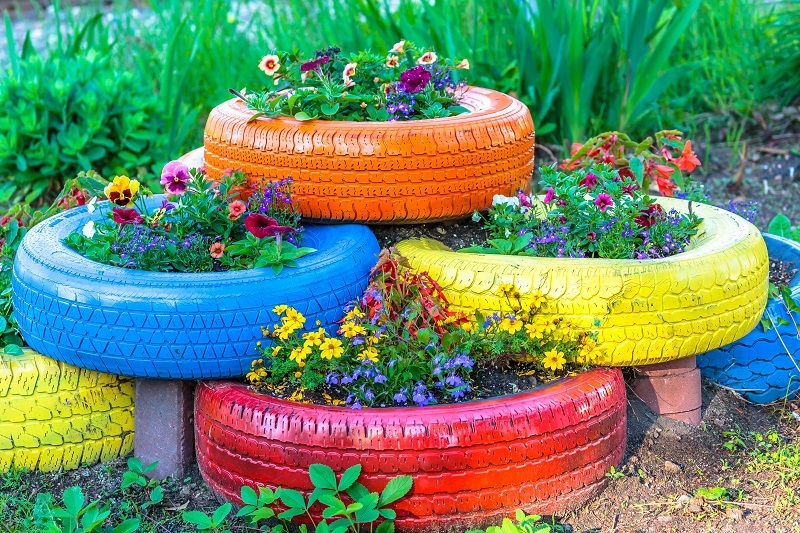7 Unbelievable Tulip Facts That Will Amaze You
Posted on 22/08/2025
7 Unbelievable Tulip Facts That Will Amaze You
Tulips are not just beautiful and vibrant flowers; they are also steeped in fascinating history, legends, and jaw-dropping facts. Whether you are a gardening enthusiast, a flower aficionado, or simply love discovering new things, these unbelievable tulip facts will leave you amazed! From their surprising origins to mind-blowing historical events and unique botanical traits, tulips are much more than meets the eye.
1. Tulips Did Not Originate in the Netherlands
Despite their strong association with Dutch culture, tulips are actually native to a completely different region.
Central Asia: The True Home of Tulips
- Origins: Tulips originated in the wilds of Central Asia, particularly in present-day Kazakhstan, Uzbekistan, and parts of eastern Turkey.
- Nomadic tribes in this region were the first to cultivate and admire these remarkable blooms.
- Wild tulip species still grow in the mountain valleys and steppe landscapes of Central Asia.
The journey of the tulip flower from Asia to Europe was facilitated by the Ottoman Empire, with sultans and courtiers popularizing them in Turkey before the Dutch fell in love with their mesmerizing colors. In fact, the word "tulip" is believed to derive from the Persian word for "turban" due to the flower's resemblance to this headwear.
SEO Tip: If you ever wondered about the true origin of tulip bulbs or are searching for where do tulips come from, now you know--they hail from Central Asia!

2. Tulip Mania: History's First Economic Bubble
One of the most fascinating tulip facts is their role in one of the world's first recorded economic bubbles.
The 17th Century Dutch Tulip Craze
- During the 1630s, demand for rare and vividly colored tulip bulbs in the Netherlands reached insane heights, a period now called Tulip Mania.
- Single tulip bulbs could fetch prices higher than an Amsterdam canal house, making them luxury items for the elite and everyday people eager to get rich.
- By 1637, the market crashed spectacularly, devastating countless investors but also etching tulip fever into economic history.
This unbelievable economic story showcases the incredible influence these beautiful spring flowers wielded over society.
3. There Are Over 3,000 Varieties of Tulips
Tulips come in a truly astonishing array of shapes, sizes, and colors. The diversity of tulips is one of the most interesting facts about tulip flowers.
Types of Tulips Galore
- There are over 3,000 officially registered varieties of tulips across the world.
- Tulip species are grouped into fifteen classifications, including Darwin Hybrid, Triumph, Lily-flowered, and Parrot tulips.
- From petite Kaufmanniana tulips to the extravagant Fringed tulips, there is a tulip for every garden and every aesthetic taste.
Virtually every color of the rainbow is represented except for truly blue tulips--despite historic efforts, the elusive blue tulip has never occurred naturally.
4. Tulips Symbolized Wealth and Power
Throughout history, tulip flowers have carried deep meanings and have been coveted by royalty and aristocracy.
The Flower of Emperors
- Ottoman Empire: The period known as the "Tulip Era" in 18th-century Ottoman Turkey saw tulips as status symbols and inspiration for textiles, tiles, and poetry.
- Europe: In the 17th century, Dutch nobility and merchants used tulip gardens to showcase their prosperity and refined taste.
- Special rare colors, such as the dark Queen of Night tulip, were especially prized for their rarity and mysterious beauty.
Tulips even made their way into laws regarding sumptuary restrictions, dictating who was allowed to own and display certain varieties. Today, giving tulips as a gift still symbolizes charity, love, and the arrival of spring.
5. Some Tulips Are Edible (and Life-Saving!)
Believe it or not, tulip petals and bulbs are technically edible, making this one of the most unbelievable tulip facts on this list!
Tulips on the Menu
- During World War II, the Dutch faced famine and starvation. Out of necessity, they turned to tulip bulbs as a food source.
- Tulip bulbs were boiled, roasted, and even ground into flour, providing crucial nourishment during harsh times.
- Note: While some wild tulips and cultivated bulbs are technically edible, others may cause digestive distress and should not be consumed unless properly identified and prepared.
Some modern chefs and creative cooks have used tulip petals to add vibrant color and a mild, crunchy texture to salads or as garnishes for desserts. Always use pesticide-free, organically grown petals!
6. Tulips Have a Unique Botanical Trick
The tulip flower is not just a feast for the eyes--it's full of surprises at the botanical level, too.
Thermonastic Movements: The Tulip's Secret Dance
- Tulip blooms open and close their petals in response to temperature and light--a phenomenon called thermonasty or nyctinasty.
- In the cool of the morning, tulips open up to the warming sun, then close again in the evening or at lower temperatures to protect their reproductive organs.
- This movement can be a wonder to observe in the garden and helps extend the life of the bloom.
This botanical adaptation not only maximizes pollination opportunities but also helps conserve energy and protect the flower from inclement weather.
7. Tulips Inspire Festivals Around the World
Thanks to their stunning beauty and cultural impact, tulip festivals attract millions of visitors every year around the globe.
Celebrations of the Tulip Flower
- The Keukenhof Gardens in the Netherlands--often called the "Garden of Europe"--boasts more than seven million tulips during peak bloom in spring.
- In Canada, the Canadian Tulip Festival in Ottawa began as a gesture of gratitude; the Dutch royal family sent thousands of bulbs to thank Canadians for sheltering Princess Juliana during WWII.
- Other notable celebrations include Tulip Time in Michigan, Skagit Valley Tulip Festival in Washington State, and Istanbul Tulip Festival in Turkey--where tulips are honored in their original homeland.
These impressive displays turn cities and gardens into vivid seas of color, connecting people worldwide through a shared appreciation for the timeless beauty of the tulip.
Bonus: More Mind-Blowing Facts About Tulips
- Tulip bulbs can be used as a substitute for onions in recipes--though the flavor is mild and somewhat starchy.
- Unlike many flowers, tulips continue to grow after they are cut; stems can extend up to an inch in a vase.
- Amazing genetic diversity: Tulips have the ability to mutate, producing new and surprising patterns and colors (called "breaking"). This is how many striking, variegated varieties originated!
- Single tulips can live for up to 10 years in the right conditions, making them a rewarding addition to any garden.
How to Grow and Care for Tulips
Given their long, fascinating history, it's no wonder so many want to plant tulips in the garden. Here are some quick tips:
Planting Tulip Bulbs
- Plant bulbs in autumn, 6-8 weeks before your first hard frost, about 6 inches deep and 4 inches apart.
- Choose a sunny or lightly shaded spot with well-drained soil--tulips dislike wet feet!
- Feed with bone meal or bulb-specific fertilizer to ensure a strong spring bloom.
After their show-stopping blooms, let the foliage die back naturally to feed next year's flowers. With minimal care, tulip bulbs will reward you year after year.
Why Are Tulips So Popular?
From their exotic roots to their starring role in economic history and culture, tulips have captured hearts for centuries. Their elegance, vibrant colors, and remarkable diversity make them sought-after all over the world. Whether you're hoping to make a statement in your garden, searching for the perfect bouquet, or simply want to marvel at their story, tulips are one of nature's true wonders.

Summary of the Most Unbelievable Tulip Facts
- Tulips originated in Central Asia, not the Netherlands.
- Tulip Mania was the world's first economic bubble.
- There are over 3,000 tulip varieties available globally.
- Tulips once symbolized wealth and exclusivity among royals and elites.
- Some tulips are edible and helped save lives during times of famine.
- Tulip blooms open and close in response to temperature (thermonasty).
- Tulip festivals are celebrated around the world, attracting millions of visitors each year.
If you enjoyed these amazing tulip flower facts, consider sharing the wonder with friends, or plan your visit to a tulip festival to witness the spectacular blooms yourself!
Conclusion: The Enduring Magic of Tulips
The next time you spot a vibrant patch of tulips swaying in the breeze or marvel at a stunning arrangement in a vase, remember these 7 unbelievable tulip facts. Tulips are living links to history, culture, survival, and beauty, proving that sometimes, the most common sights can hold the most astonishing stories. No wonder the tulip flower continues to inspire wonder and delight around the globe, season after season.
```Latest Posts
7 Unbelievable Tulip Facts That Will Amaze You
Smart Solutions to Extend the Life of Your Cut Flowers
Peonies: A Colorful Symbolism Journey







